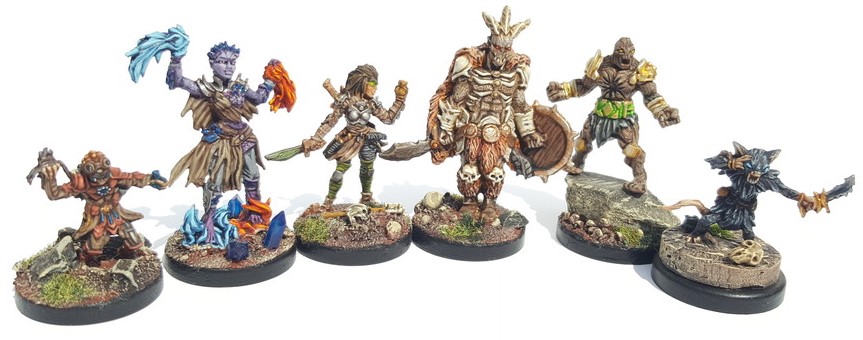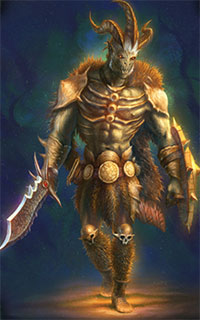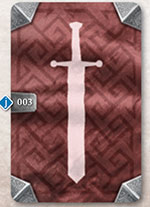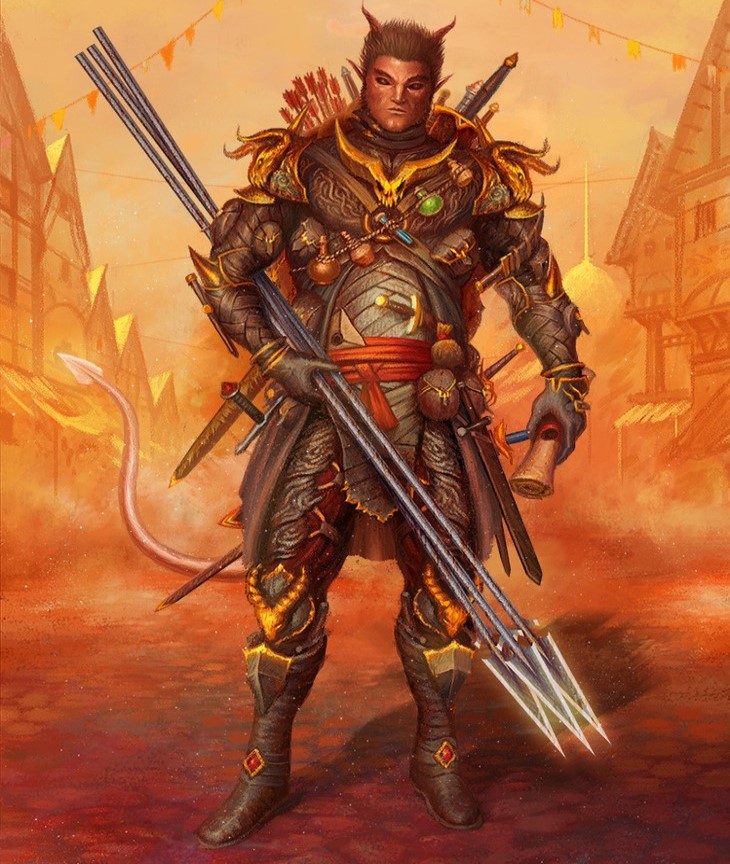
Getting Started
Find the Party pad, take a sheet and fill in your party's name.

Each player chooses a starting Character Class (Brute, Tinkerer, Spellweaver, Scoundrel, Cragheart, or Mindthief), and opens the corresponding character and miniature boxes, then takes that character's character mat, deck of level 1 ability cards, and the 5 character tokens. See pages 42-43. Leave the attack modifier adjustment cards inside the character's box (the cards with the crossed swords on the back).
Each player then takes a sheet of his or her class' corresponding Character pad, fills out the name, and writes down the 30 Gold every character starts with in the Gold Notes section.
Shuffle the 24 dark gray Personal Quest cards. Each player is dealt 2 random personal quest cards and chooses 1 to keep, returning the other to the personal quest deck followed by a shuffle. Pick a quest that you think goes with the character you created. Personal Quests do not have to be kept secret, but they can be if you wish.
Each player receives a standard 20-card Attack Modifier Deck from the game's (not the character's) box (crossed swords back). These are numbered for players 1 to 4, with the number in the lower left corner of each card, and consist of 6 "+0", 5 "+1", 5 "-1" and a single "+2", "-2", "2x" and "Null" card each.
Hand each player a blue wooden Experience Tracker to keep track of their current experience on the right side of their character mat, starting at 0.
Hand each player a red wooden Hit Point Tracker to keep track of their current health at the bottom of their character mat, starting at the number located below the level 1 indicator.
Now create the city's available supply of items using all copies of the red-sword-back Standard Items 1-14.
Put the rest of the item cards back into the box.
Read the top half of the first page of the scenario book. Place stickers if appropriate and desired.
You are encouraged to purchase some helpful items before heading out, using each character's starting 30 Gold.
The scenario book lists some recommendations for each class if you're unsure of what to buy. Remember that players cannot trade money or items. You may want to hold onto some Gold for City or Road events. You can equip 1 Head, 1 Body, 1 Feet, a total of 2 Hands, and Small Items=Character Level/2, rounded up. Some Items require that you add additional -1 cards to your Attack Modifier Deck. Tapped cards can refresh on a long rest.
Consumed cards can only be refreshed using a special ability (or between scenarios).
Separate City Events 1-30 from the City Events deck, then shuffle them. Put the rest of the city event cards back into the box. Draw the top card of the City Event deck and read and resolve the front side.

Separate Road Events 1-30 from the Road Events deck, then shuffle them. Put the rest of the road event cards back into the box. Draw a Road Event and read and resolve the front side. (You don't resolve a Road Event when replaying the same Scenario or moving from a Scenario Location to a linked Scenario Location).
Set up the board using the hex tiles as indicated in the scenario book including the door hexes (the hex tiles have a different label on each side). As you open the doors to each room, you will populate that room.
Put out the Elemental Infusion board, and place all elemental discs in the inert column.
Take out the Monster attack modifier deck (it's the same type and number as the player deck except it has an "M" in the lower left hand corner).
Find the Monster Ability cards (maroon back with a skull) for each Monster mentioned in the scenario. If you've found a monster deck with any part of the monster name in it, that's the one you need (e.g., Guard, Shaman, etc)..
Find the Monster Statistics Card for each Monster in the scenario.
Rotate it so it is set to Level 1, and place it in a Monster Sleeve.
Find the Standees for each monster in the scenario.
Follow the rules to place monsters depending on the number of players. Place in the first room only. Don't forget to randomly select the standees when placing them (their numbers determine when they act).
Draw 2 Battle Goal cards (grey brick back), and choose one to keep.
Do not share your Battle Goal with other players. Return unchosen cards and shuffle.
Once per visit to Gloomhaven, each player can donate 10 gold to the Sanctuary. Doing so lets the player add 2 Bless attack modifier cards to their attack modifier deck for the next scenario.
If you fail a Scenario, you get to keep the experience and loot (but not checkmarks) collected during the scenario.

Start Of Combat Round
Each player will either select 2 cards from his hand (one on top of the other) to play or declare that he is performing a Long Rest Action (Initiative 99). The Long Rest is required if the player has only 0 or 1 card in their hand; if the player also has only 0 or 1 card in their discard pile (or has 0 HP), they are exhausted and can no longer participate in the Scenario (see page 28). Otherwise, the player chooses which card in their discard pile they wish to move to their lost pile. He also heals 2 Hit Points and refreshes all of his spent Items.
Next, draw Monster Ability Cards for all of the active Monsters and determine the Initiative Order. If there is a tie in Initiative between players, compare their non-leading cards. If there is still a tie, players can decide. If there is a tie between a player and a monster type, the player goes first.
Starting with the lowest Initiative, players and monsters take their turns. Players perform 1 top action from 1 of their played cards and 1 bottom action of the other. The leading card no longer matters. The top action can instead be Attack 2, and the bottom action can instead be Move 2.
Characters and monsters can move through allies, but cannot move through enemies or obstacles. Jumping ignores terrain during movement, but not the final hex. Flying completely ignores all terrain effects. Movement must end in a non-occupied hex. If a player triggers a door, reveal the adjacent room. Newly revealed monsters draw cards for purposes of determining their Initiative, but they don't move until after the current player completes his turn.
A player can infuse an element (fire, wind, etc)., but cannot consume it in the same turn (other player's can benefit).
Any element in the strong or waning column can be consumed. Monsters always consume elements if they can.
Player-initiated Combat
A player is free to choose not to perform any part of their action (but must do so in order from top to bottom), but they must perform any part that would negatively impact themselves, an ally, or a summoned figure.
Range X attacks targets enemies within X hexes as long as a straight line can be drawn from any corner of the attacker's hex to any corner of the defender's hex without touching any part of a wall.
A ranged attack targeting an adjacent enemy gains Disadvantage against that target. In essence, you draw 2 attack modifier cards and use the card with the worse result.
A Target X value indicates the character can target X number of enemies within the attack's range.
The Attack Value shown on the card can be modified in order by: 1 Bonuses and Penalties from activated cards, Items, and other sources; 2 the Attack Modifier Card (one drawn for each target); 3 The target's Defensive Bonuses and Shields. Monsters killed die immediately. Place 1 Money Token on the hex where they died.
All Attack Effects and Conditions are applied regardless of whether the attack caused Damage.

Monster-initiated Actions
All enemies of the active Monster Type perform in order: Elite first, then according to the number on their standee.
First priority is to target the player that can be brought into attack range with the fewest moves. In case of a tie, it targets the player with lowest Initiative. The monster moves as close as possible unless it's also performing a ranged attack in which case it simply moves within range. A monster will move away to avoid disadvantage.
If no Range is specified on the Monster card, Monsters with a Range value will default to a ranged attack.
When Damage is dealt to a player, the player can either take the Damage, choose 1 card to lose from their hand, or choose 2 cards to lose from their discard pile. The player's 2 played cards cannot be lost in this way.

End Of Combat Round
For each revealed Monster Card with a reroll icon in the bottom right corner, reshuffle that Monster Deck.
For any Modifier Deck where a standard 2x, Null, or Reshuffle was drawn during the round, reshuffle that Deck.
Each player's 2 played cards will either be discarded (the normal case), lost (if a Consume icon is visible), or activated (if a Persistent or Round Bonus icon is visible).
Each player can declare they're taking a Short Rest (only if they have 2 or more cards in their discard pile). The player shuffles his discard pile and randomly places one of the cards in the lost pile, then takes the others in hand.
(If the player doesn't like the randomly chosen card, he can take 1 Damage and randomly lose a different card; this can only be done once per Short Rest).
All Elemental Infusions wane, moving 1 step to the left on the Elemental Infusion Tile.
Read also the first game setup guide.
Continue Reading

